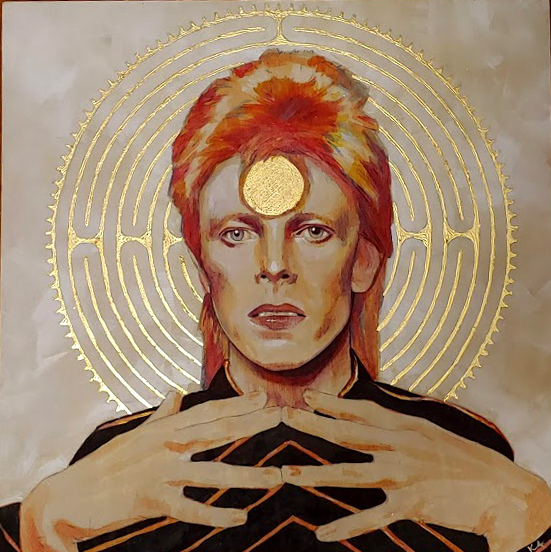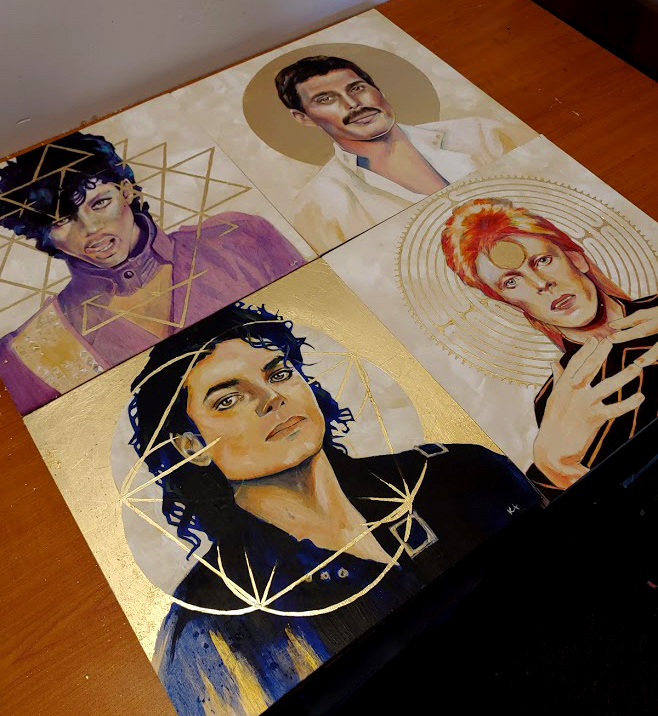
Prince

David Bowie

Freddie Mercury

Michael Jackson


Prince
The Sri Yantra is said to contain the path to enlightenment. The symbol's five upright triangles represent male energy while its five downward triangles represent the feminine divine. Together they represent the perfect union of male and female. The sacred geometry of the Sri Yantra is considered so profound that meditating upon it is said to inspire divine wisdom.
David Bowie
The iconic labyrinth of Chartres Cathedral is symbolic of our journey towards the pursuit of truth, wisdom, enlightenment, and the realization of what is wonderful.
The labyrinth is composed of a number of symbols which strike the most profound chords of our subconscious—the circle, the cross and the spiral. Through these crucial forms the labyrinth is linked to man's inner world, to the collective unconscious, and to the sacred motifs of most cultures.
Freddie Mercury
The iconography of the round halo is typically regarded as a representation of divine nature. The halo is a symbol of the "light of God" shining forth through the icon and is similarly described as a window into the heavens.
Michael Jackson
The Golden Ratio, from a theological and artistic viewpoint, represents mathematical perfection of aesthetics, which is the epitome of the Divine.
